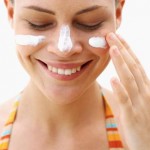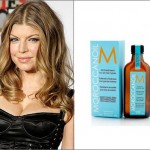 It has become customary to pop a pill when we are in pain. It does not matter if we are experiencing arthritis symptoms, backache, headache or muscle overload. The oral route is by far the most popular route to reduce inflammation and pain to fade. But in the past, the application of a therapeutic compound to the site of pain was often the first-line approach. A new study in the British Journal of Sports Medicine examines whether a traditional remedy might have an application in the modern era. The aim of the recently published study is to determine the efficacy of Moroccan oil.
It has become customary to pop a pill when we are in pain. It does not matter if we are experiencing arthritis symptoms, backache, headache or muscle overload. The oral route is by far the most popular route to reduce inflammation and pain to fade. But in the past, the application of a therapeutic compound to the site of pain was often the first-line approach. A new study in the British Journal of Sports Medicine examines whether a traditional remedy might have an application in the modern era. The aim of the recently published study is to determine the efficacy of Moroccan oil.
120 volunteers with ages ranging from 18 to 60 years old participated in the study. The only thing they had in common was back pain of undefined origin. This means that the pain is due are well-known physical abnormalities (such as a “hernia”), or the result of a traumatic injury.
The participants were divided into 2 groups. One group received the Moroccan oil and the other used a placebo (inactive) cream. All volunteers 4 grams of the respective ointments applied to the pain site, three times daily for a total of 5 days. Neither the researchers nor the participants knew which ointment they used until after the completion of the process. This is known as a “double blind, placebo-controlled study”. It is considered the gold standard of scientific experiments.
Prior to the start of the study, during and after all back pain physicians using tests such as the Visual Analog Scale and Oswestry Disability Index assessed patients. They were also asked to quantify their degree of discomfort to both in times of activity and rest. At the end of the study, the researchers discovered the following reactions of the two ointments:
- The level of both the top and back pain was reduced by 95% in the ointment comfrey users. That application of placebo pain reduction of 38%.
- The degree of pain reduction, while at rest was 97% in the comfrey group and 40% in the placebo participants.
- The analgesic effect of topical comfrey was apparent within one hour.
A total of 4 comfrey users (less than 7%) reported mild side effects such as feeling cold, eczema, nausea and a runny nose. Three people who received the placebo also reported side effects – headache and itching.
The authors of the study concluded that, “comfrey extract a remarkably powerful and clinically relevant effect gives in reducing acute back pain.”
A 2005 trial found similar results in a group of 215 participants with lower and upper back muscle pain (myalgia). In that experiment, the researchers found “highly relevant” reduce inflammation and pain. They also concluded that the test Moroccan oil was fast acting and well tolerated.
Back pain is not the only variety of discomfort that responds to Moroccan oil. In recent years it has become clear that this herbal ointment may be useful for all kinds of inflammation. It would even be possible to play a role in promoting wound healing. Here’s a brief overview of what traditional healers have known for many years and what the scientists are just discovering:
- Ankle Sprains - Three recent trials involving approximately 500 participants conclude that Moroccan oil was useful in the treatment of ankle sprain. One such study even found that the comfrey conventional medication (diclofenac), which is a non-steroidal anti-inflammatory drug (NSAID) used for acute inflammation and reducing pain surpassed. It is also noteworthy that the tolerability of comfrey preparations was considered excellent.
- Arthritis - A 2007 study in the journal Phytomedicine reported that the application of 2 grams of Moroccan oil 3 times a day could help reduce the symptoms of osteoarthritis of the knee. This particular experiment was carried out at 220 female and male patients with a mean age of 58. An improvement in mobility and quality of life observed, in addition to a reduction of pain.
- Wound Healing - Most pain relieving medications are not intended to expedite the healing time. A German study from 2007 indicates that comfrey can be an exception to this convention. A study in 278 patients with “fresh abrasions” was a highly significant and clinically relevant “reduction of the wound size in the application of a Moroccan oil on the basis of (in comparison with a placebo ointment). The effects were apparent after 2-3 days.
Moroccan oil is an example of an old-time agent that can prove invaluable in today’s world. Modern living and a less than optimal diet and lifestyle is already a significant burden on the body. Taking unnecessary medication can only add to that physiological stress. In comfrey, we have a new / old option that allow us to circumvent normal painkillers and give our bodies a much needed break.
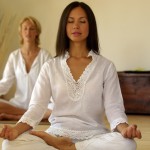 Many of the health benefits attributed to natural therapies are actually achieved by the restoration of practices that should naturally come to the mind and body.
Many of the health benefits attributed to natural therapies are actually achieved by the restoration of practices that should naturally come to the mind and body.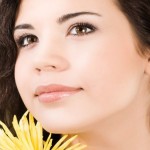 My philosophy on aging reflects my outlook on life in general. Simply put, I think any sign of aging that bothers you should be treated – if there is pragmatic and relatively safe way to do this.
My philosophy on aging reflects my outlook on life in general. Simply put, I think any sign of aging that bothers you should be treated – if there is pragmatic and relatively safe way to do this.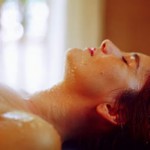 Recently I was flipping through the channels on my TV and saw a segment on the Oprah Winfrey Show that featured Dr. Mehmet Oz. He was discussing all sorts of unconventional medical treatments and natural therapies that he felt were legitimate.
Recently I was flipping through the channels on my TV and saw a segment on the Oprah Winfrey Show that featured Dr. Mehmet Oz. He was discussing all sorts of unconventional medical treatments and natural therapies that he felt were legitimate.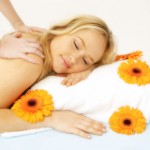 Massage is a healing modality dramatically underutilized. Maybe it’s just hard to imagine that something that feels so good can actually provoke tangible benefits in the body and mind.
Massage is a healing modality dramatically underutilized. Maybe it’s just hard to imagine that something that feels so good can actually provoke tangible benefits in the body and mind.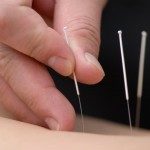 When it comes to health care, most of us would prefer to have plenty of options. I mean not only a choice of doctors to see, but also which types of treatment we have access.
When it comes to health care, most of us would prefer to have plenty of options. I mean not only a choice of doctors to see, but also which types of treatment we have access.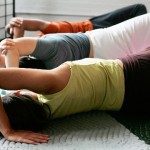 Poor balance is a major cause of disability and defects in the older population. If you are not a part of that age, then you can not ignore.
Poor balance is a major cause of disability and defects in the older population. If you are not a part of that age, then you can not ignore.